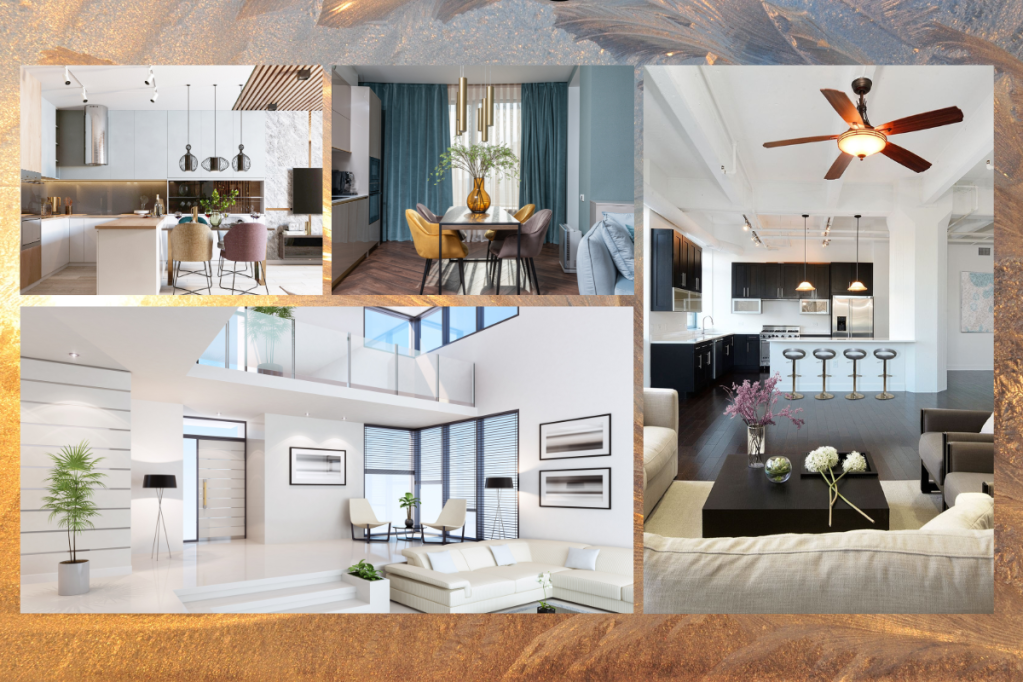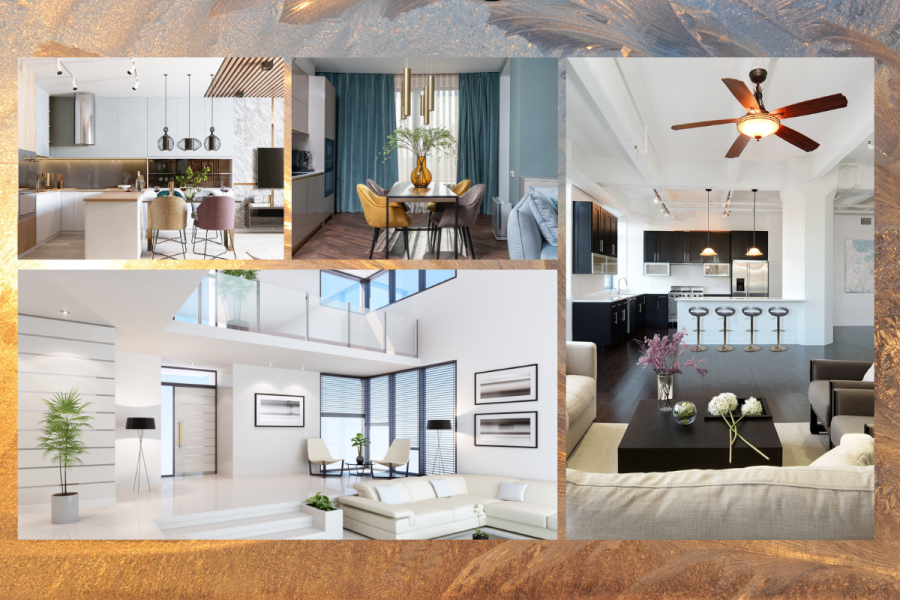
Meta Description: Discover the latest trends and techniques in interior design that can transform your living space into a haven of style and comfort. From statement pieces to colour schemes, this guide provides inspiration and advice for every room in your home.
The Power of Statement Pieces: How to Incorporate Unique Furniture and Decor
Adding statement pieces to your home decor can instantly transform the atmosphere of any room. A statement piece is a unique furniture or decor item that catches the eye and draws attention, becoming the focal point of the space. Statement pieces can range from a bold artwork, a vintage rug, an eccentric sofa, or even an oversized plant.
One way to incorporate statement pieces is to keep the rest of the room decor minimalistic and let the statement piece be the star. This approach allows the piece to stand out and create a visual impact. Another approach is to create a theme around the statement piece, pulling colours and textures from the piece to create a cohesive look.
When selecting statement pieces, it is essential to consider the scale of the piece and the room it will be placed in. A large statement piece can overwhelm a small room, while a small statement piece can be lost in a larger room. It is also important to consider the colour and style of the piece to ensure it fits well with the existing decor.
Statement pieces can be added to any room, including the living room, bedroom, dining room, and even the bathroom. Don’t be afraid to mix and match statement pieces to create a unique and eclectic style that reflects your personality.
Incorporating statement pieces into your home decor is an excellent way to express your individual style and create a unique atmosphere. Whether you choose to make a bold statement with an eccentric piece of furniture or add a pop of colour with a bright artwork, statement pieces can transform a room and make it truly memorable. So, go ahead and experiment with unique furniture and decor to create a home that is as unique as you are.
Colours that Speak Volumes: How to Choose a Palette that Reflects Your Style
Choosing a colour palette for your home can be overwhelming, as it sets the tone for your entire space. But fear not, there are many factors that can help guide you towards a colour scheme that reflects your style and personality. Start by considering the mood you want to convey, whether it’s calm and relaxing, energizing and vibrant, or somewhere in between. Warm colours like reds, oranges and yellows can add energy and excitement, while cool colours like blues and greens promote relaxation and tranquillity.
Another factor to consider is the lighting in your home, as natural light and artificial light can affect the way colours appear. If your home is flooded with natural light, you can opt for darker, bolder shades. However, if your space has limited light, you may want to consider lighter, brighter colours that reflect light and create an illusion of more space. It’s also important to consider the existing decor and furniture in your home, as your colour palette should complement and enhance these pieces.
One approach to choosing a colour palette is the 60-30-10 rule, which involves using a dominant colour for 60% of the room, a secondary colour for 30% and an accent colour for 10%. This creates a balanced look that is visually pleasing. When choosing colours, consider how they work together and the mood they create. For example, pairing a neutral colour like beige with a bold colour like navy blue can create a sophisticated, calming atmosphere.
Lastly, don’t be afraid to incorporate your own personal style and taste into your colour scheme. Whether you prefer bright, bold colours or subtle, muted hues, your home should reflect your personality and style. Experiment with different colours and combinations, and trust your instincts. Remember, your colour palette can always be adjusted and updated over time as your tastes evolve.
In conclusion, choosing a colour palette for your home is a personal and creative process. By considering factors like mood, lighting, existing decor and personal style, you can create a colour scheme that reflects your personality and sets the tone for your space. With a little experimentation and creativity, you can achieve a beautiful, cohesive look that brings joy and comfort to your home.
Mixing and Matching: How to Pair Different Styles and Patterns for a Cohesive Look
When it comes to home decor, mixing and matching different styles and patterns can be intimidating. However, when done correctly, it can create a unique and cohesive look that reflects your personal style. The key is to find a balance between contrasting elements and harmonious elements.
One way to start is by choosing a dominant pattern or style as the foundation of the room, and then adding complementary elements to create visual interest. For example, if you have a neutral sofa, you can add patterned throw pillows in complementary colours to create a focal point. Similarly, you can mix different styles of furniture, such as pairing a vintage armchair with a modern side table, to create a dynamic and layered look.
Another important aspect is to pay attention to scale and proportion. If you mix too many large-scale patterns or furniture pieces, it can create a cluttered and overwhelming look. On the other hand, too many small-scale elements can make the space feel busy and chaotic. It’s important to find a balance between different scales and proportion to create a harmonious look.
When mixing and matching different styles and patterns, it’s also important to consider the colour palette. A cohesive colour scheme can tie together seemingly disparate elements, while a clashing colour scheme can create a jarring effect. One way to ensure a cohesive colour scheme is by using the 60-30-10 rule, where 60% of the room is dominated by a neutral colour, 30% is a secondary colour, and 10% is an accent colour.
In summary, mixing and matching different styles and patterns can be a fun and creative way to decorate your home. The key is to find a balance between contrasting elements and harmonious elements, pay attention to scale and proportion, and consider the colour palette. With these tips, you can create a unique and cohesive look that reflects your personal style.
Playing with Light: How to Use Lighting to Enhance the Ambience of Your Home
The right lighting can make a world of difference in the ambiance and overall feel of your home. Whether you prefer a warm and cozy atmosphere or a bright and airy space, strategic lighting can help you achieve your desired effect. One of the key factors to consider when using lighting to enhance your home is the placement of your light fixtures. Overhead lights, floor lamps, and table lamps can all be used to create a layered lighting effect that can be tailored to your needs.
Another important factor to consider when using lighting in your home is the type of bulb you use. LED lights are a popular choice because they are energy-efficient and long-lasting. However, the type of bulb you choose will depend on the atmosphere you want to create. Soft white bulbs are ideal for creating a cozy and relaxed atmosphere, while daylight bulbs are best for areas that require bright and clear lighting, such as a kitchen or bathroom.
Lighting fixtures themselves can also be used as statement pieces in your home decor. Unique and creative light fixtures can be used to add personality and character to a room. For example, a chandelier in the dining room can add a touch of elegance and sophistication, while a funky and colorful pendant light can add a playful and whimsical touch to a child’s bedroom.
Lastly, consider the use of dimmer switches to control the brightness of your lights. This can help you create the perfect ambiance for any occasion, from a romantic dinner to a cozy movie night. Additionally, dimming your lights can also save energy and extend the life of your bulbs.
In conclusion, lighting can be a powerful tool in enhancing the overall atmosphere and style of your home. By considering factors such as placement, bulb type, and fixture design, you can create a lighting plan that is both functional and beautiful.
